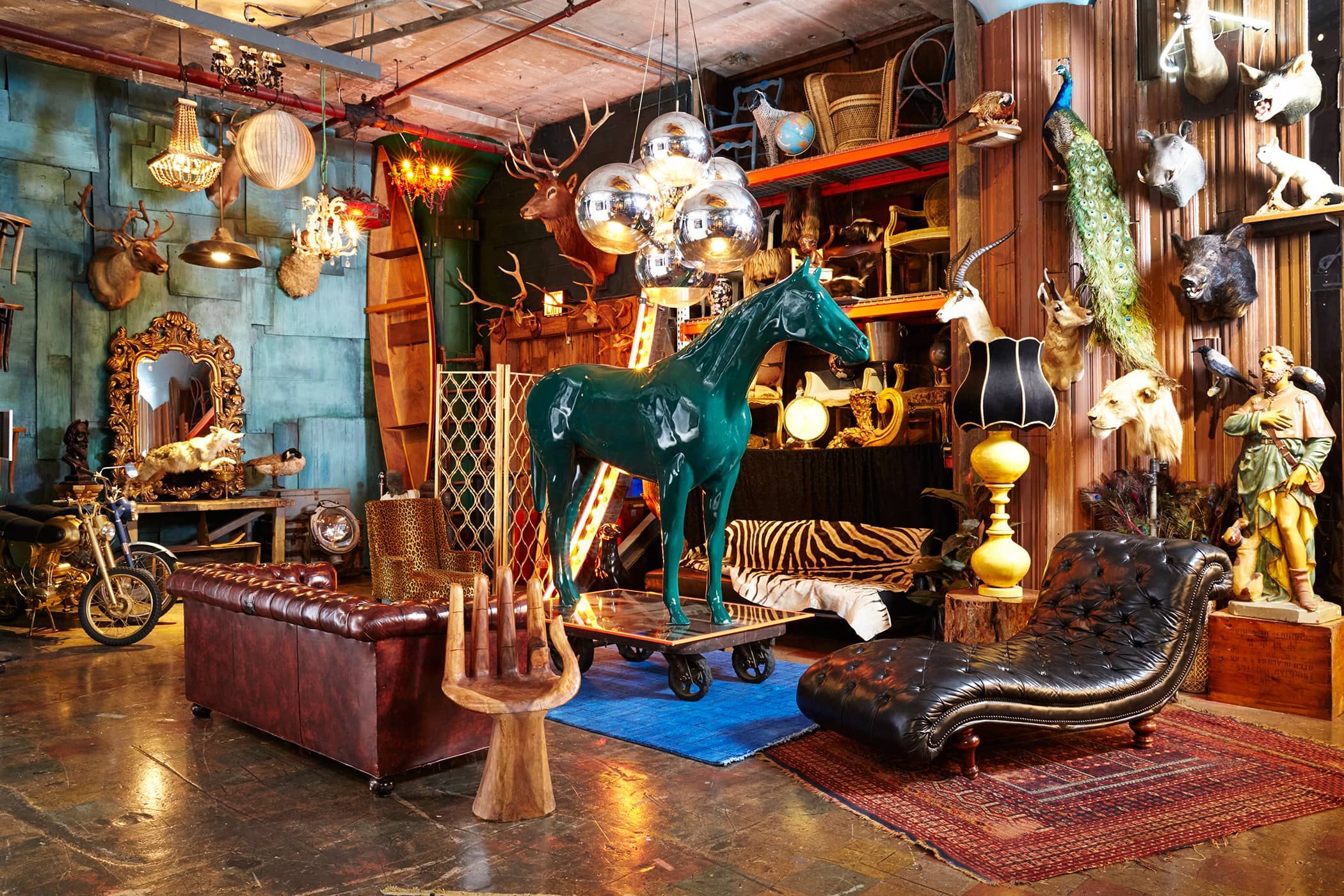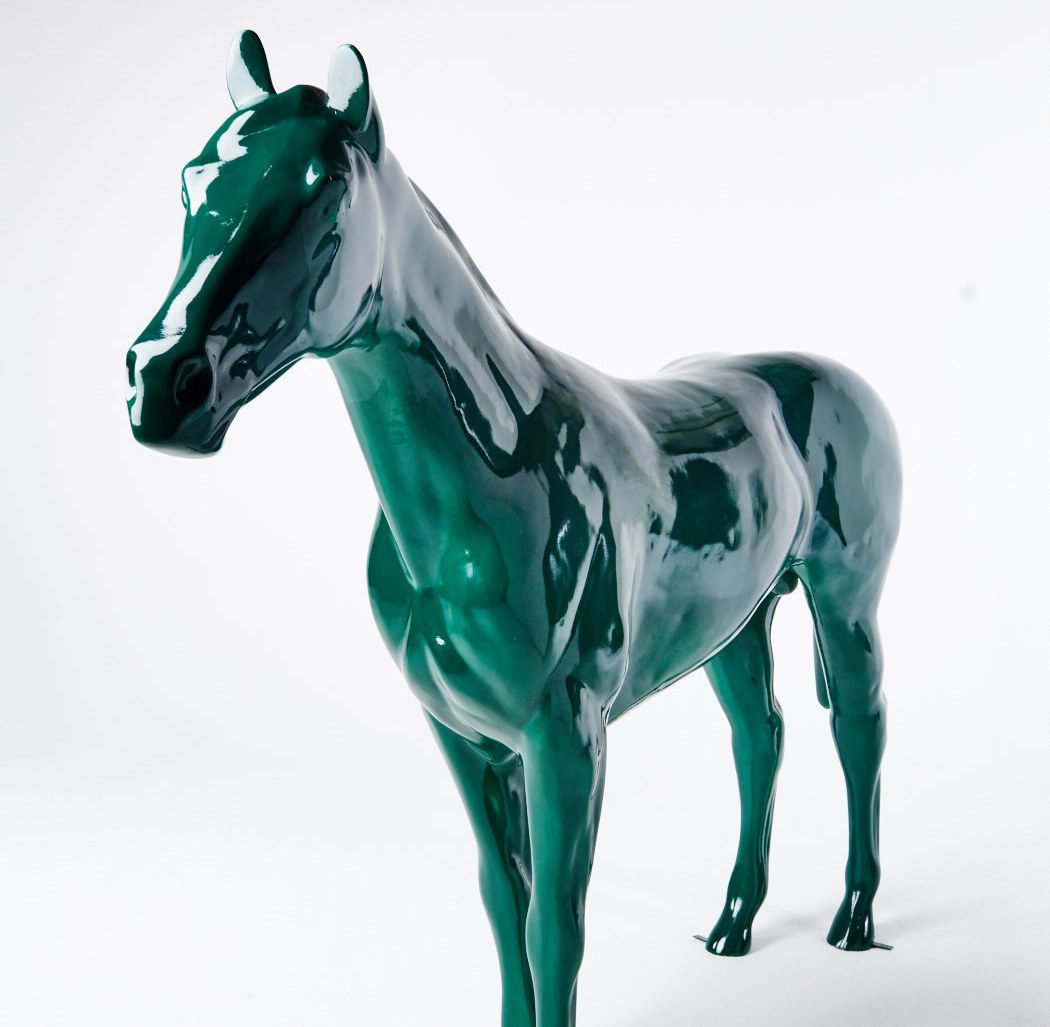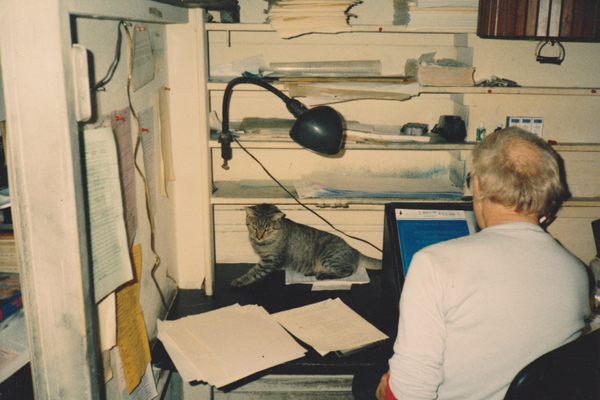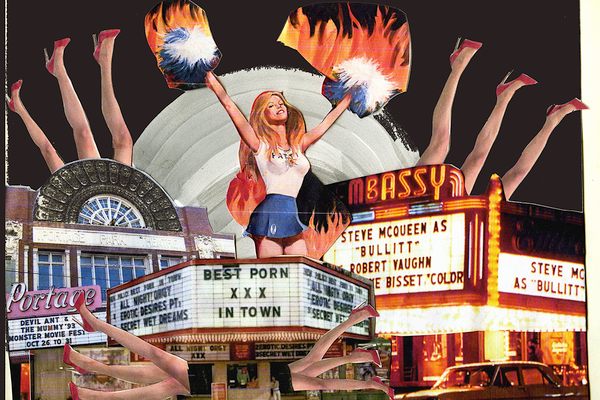Hunting for Treasure in Brooklyn’s Coolest Prop House
Take a look at the eclectic wares of ACME.

Walking into Brooklyn’s ACME Studio you have to pass a TV—displaying static and embellished with disco balls—that is half-hidden under faux-jungle underbrush that also drapes over a giant wooden skull, next to a pristine vintage motorcycle. And that’s all before you’re greeted by the bright green plastic horse.
ACME Studio in Williamsburg, Brooklyn calls itself a prop house or a photo studio, but its space is more like a modern cabinet of curiosities, the walls filled with oddities and artifacts accumulated from years of careful (and not so careful) collecting.

“This horse of a different color was gifted to us, oddly enough, and has been a staple of our studio ever since! Even when wrapped up in bubble wrap and packing blankets, this unmissable shape always stops traffic when being loaded out of the back of a truck.” -Brian Colgan, ACME
ACME started with a compulsive collector. Its founder, Shawn Patrick Anderson, is an accomplished set designer. “He’s always had tons of cool stuff,” says Brian Colgan, ACME partner and studio director. After Anderson accumulated a wild collection of props and leftovers from sets he worked, as well as knick-knacks he picked up out in the world, he eventually had to have a warehouse to store it in. Eventually he began being approached by photographers and friends who wanted to use his space for shoots, and not long after, the idea for ACME was born.
“In the beginning we had a lot of taxidermy, just because Shawn likes taxidermy,” says Colgan. “Taxidermy is pretty fragile. A lot of the prop houses don’t have it or what they do have is pretty beat-up. I think it put us on the map somewhat.” And while their space still houses an impressive amount of intriguing taxidermy including lion, elk, and boar heads, alongside a small menagerie of other mounted critters, the space is also jam-packed with an ever-morphing assemblage of… stuff.

“The Hairy Chair, the brainchild of our founder Shawn Patrick Anderson, has become an icon of sorts for ACME. [It] never fails to delight those who encounter it—including many celebrities.”
As Colgan says, in the early days of the company, they really tried to keep everything they would find or collect from older sets, but this soon proved unsustainable. “In the beginning, we were just [taking cool things]. Then we realized, no one really wants an 800-pound barber chair from the 1920s,” he says. Now they tend to pick the items they buy for the warehouse with a more directed eye towards what their clients, who range from fashion photographers to television shows, might want.
While the company is branching out into supplying props for more television and film, ACME has built its portfolio mainly in the world of print, magazines, fashion, and increasingly events. Colgan says that they pride themselves on being able to find anything for anyone’s needs, and sometimes that means renting out something from their collection, sourcing items from other houses, or creating it themselves. However, sometimes people want things that they just have no answer for. There is a running list of the strangest requests in their office, which includes things like “11 gold bong trophies,” “fake money and Space Jam characters,” and “interactive coffee tables.” They have a lot of items, but even ACME is hard pressed to provide a “front of Batmobile.”

“A lot of our vintage luggage has names written inside or other little identification markers of those who once owned them. It’s fun to think of who may have owned a lot of the items we have, but there’s something especially romantic luggage with history.”
Rather than relying solely on thrift-store finds and photoshoot cast-offs, Colgan, Anderson, and their staff now source new items for their collection from places like eBay, Craigslist, Etsy, and estate sales. With such diverse customer needs, and constantly growing collection, it’s hard to decide what to keep around, and what to get rid of. Colgan tells the story of a dozen or so human-height pencils that they acquired for an Oprah Magazine shoot. “We held on to them for about six months, and then finally we were going to get rid of them, and the next day, someone was like, ‘Do you have 10 or 12 huge pencils?’”

“Although it doesn’t go out all that much, I love this stool. It has a dozen or so metal bars that connect to the top, and go into a hole in the bottom. If you flip the stool over, all the metal bars slide out. I’ve never for the life of me figured out why it is designed this way, although I assume it has an industrial reason rather than just amusing me.”
Today, some seven years after becoming a prop business, ACME has a reputation not just for taxidermy, but for unique items, whether that’s a handcrafted macrame wall-hanging (a personal favorite of Colgan’s), or a pair of retro-futuristic binoculars. And the collection continues to grow and morph. “We have a lot of funky stuff, that’s sort of what we’re known for, but we’re starting to get a little more clean, more modern. Mid-century stuff is really popular [right now],” says Colgan.
Prior to working at ACME, Colgan prided himself on his lack of belongings, but now he says his apartment looks more like the artfully cluttered prop studio. “I’m a collector of stuff now,” he says. And as for Anderson, Colgan says that even if the prop business was no longer around, the collection of curiosities itself would likely still thrive. “He has a limitless appetite for acquiring cool things and finding cool things. He’s always on the hunt.”








Follow us on Twitter to get the latest on the world's hidden wonders.
Like us on Facebook to get the latest on the world's hidden wonders.
Follow us on Twitter Like us on Facebook